Splitting or crushing pills might seem like a simple fix-maybe you’re trying to save money, make it easier to swallow, or adjust a dose. But if you don’t do it right, you’re not just risking an inaccurate dose. You could be exposing yourself or someone else to dangerous drug particles, cross-contaminating medications, or even inhaling toxic powder. This isn’t theoretical. In 2023, a care home in Ohio had 14 residents affected by warfarin cross-contamination because one pill splitter was used for multiple drugs without cleaning. One person had a bleed. Another nearly died.
Why Contamination Happens
Pills aren’t just little bits of medicine. Many are coated, layered, or designed to release slowly over hours. When you crush or split them improperly, you break those systems open. That’s where contamination starts.Take a blood thinner like warfarin. It’s potent. A tiny amount left on a splitter can get transferred to another pill-say, a blood pressure med. That’s enough to cause dangerous bleeding. Or consider chemotherapy drugs like cyclophosphamide. When crushed in an open container, fine particles become airborne. Healthcare workers have tested positive for trace amounts on their gloves-even after washing hands. These aren’t rare cases. According to NIOSH, 99.8% of hazardous drug particles are contained when using a closed-system crusher like the Silent Knight. Open crushing? Only 72%.
Even non-hazardous pills can contaminate each other. If you split a steroid tablet and then use the same splitter for an antibiotic, you’re not just mixing drugs-you’re changing how they work. Your body doesn’t know the difference. It just gets a dose it wasn’t meant to have.
What You Should Never Split or Crush
Not all pills are made the same. And that’s the first rule: never assume a pill can be split or crushed.The FDA says 97.8% of these types should never be altered:
- Enteric-coated pills (designed to dissolve in the intestines, not the stomach)
- Sustained-release or extended-release tablets (like metformin ER or oxycodone OxyContin)
- Capsules with time-release beads
- Hazardous drugs (chemotherapy, hormone therapies, some antivirals)
- Sublingual or buccal tablets (meant to dissolve under the tongue)
How do you know? Look for labels. If it says “DO NOT CRUSH,” “SPANNED TABLET,” or “EXTENDED RELEASE,” leave it alone. If it has a score line, that doesn’t automatically mean it’s safe to split. Some score lines are just for appearance. Always check the medication guide or ask your pharmacist. In 2024, the FDA started requiring manufacturers to test and label whether a scored tablet can actually be split safely. But not all drugs have that yet.
The Right Tools for the Job
If your pill is safe to split or crush, you need the right equipment. No scissors. No knives. No mortar and pestle from your kitchen.For splitting:
- Use a dedicated pill splitter with a v-shaped holder and a retractable blade.
- Look for stainless steel blades with a 0.05mm tolerance-this ensures even splits.
- Choose models with a built-in alignment guide. Many newer ones, like the Med-Plus Pro (2024), have visual guides to help you center the pill correctly.
For crushing:
- Only use closed-system crushers designed for pharmaceutical use.
- The Silent Knight is the gold standard-it traps 99.8% of particles inside a sealed chamber.
- Never use open containers or plastic pill crushers sold in drugstores. They leak powder.
Here’s what the data shows:
| Method | Contamination Rate | Dose Accuracy | Hazardous Drug Containment |
|---|---|---|---|
| Dedicated pill splitter (v-shaped, stainless blade) | 5.3% | 92.4% | N/A |
| Scissors or manual breaking | 31.7% | 63.7% | N/A |
| Closed-system crusher (Silent Knight) | 0.2% | 98.1% | 99.8% |
| Open container crusher | 27.9% | 71.2% | 72.1% |
Using the right tool isn’t a luxury. It’s the difference between a safe dose and a medical emergency.
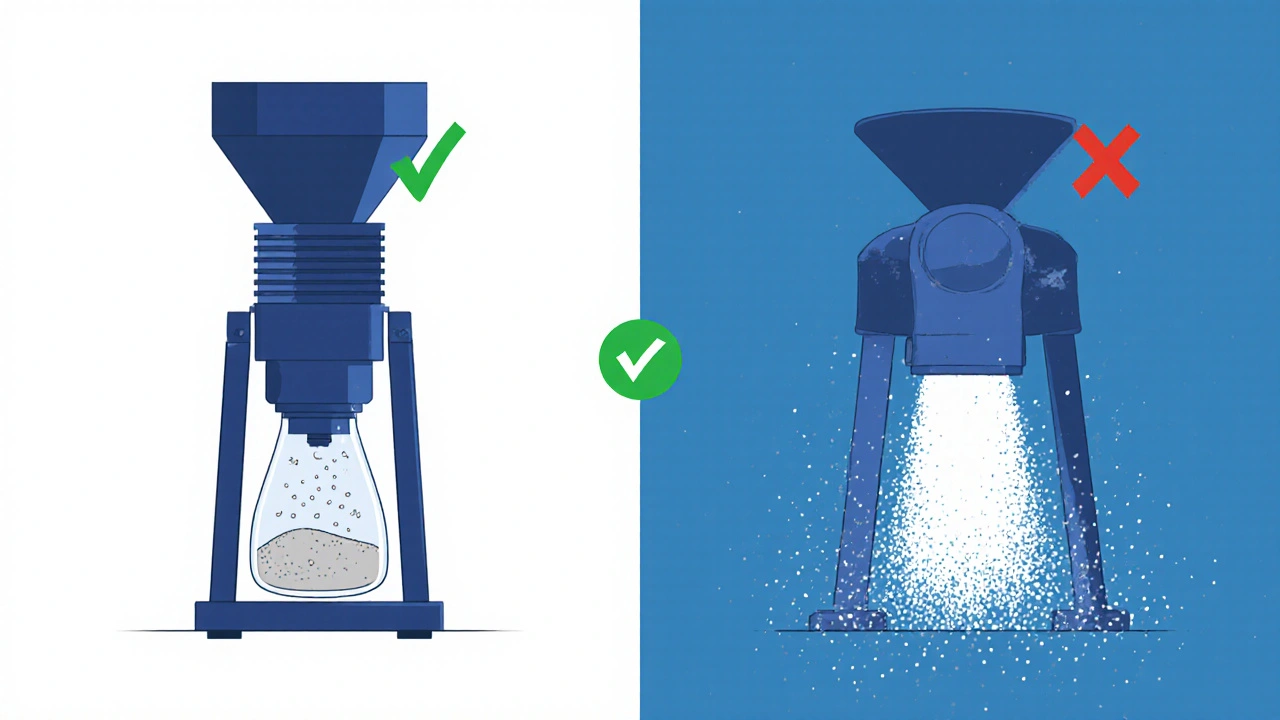
Cleaning Between Uses
Even the best equipment becomes dangerous if you reuse it without cleaning.Here’s the protocol, backed by ISMP and CDC guidelines:
- Wash your hands thoroughly before handling any medication.
- Put on disposable gloves.
- After splitting or crushing one pill, wipe the splitter or crusher with a 70% isopropyl alcohol wipe.
- Let it air dry completely before using it again.
- Never use the same equipment for two different patients without cleaning.
- For hazardous drugs, use single-use, disposable crushers if possible.
Here’s the problem: a 2022 survey found only 34.6% of care home staff cleaned their pill splitters between different medications. That’s not just sloppy-it’s unsafe. One study measured cyclophosphamide residue on gloves after handling crushed pills without cleaning. Levels reached 4.7 ng/cm². That’s enough to cause harm over time.
When to Split vs. When to Ask for Help
Splitting pills to save money is common. But it’s not always the best choice.Ask yourself:
- Is this pill labeled as splittable?
- Do I have the right tool?
- Am I doing this for one person only?
- Can I get the exact dose from the pharmacy in tablet form?
Many pharmacies now offer pre-split doses. For example, if you need 12.5 mg of a 25 mg tablet, your pharmacist can fill your prescription with 12.5 mg tablets instead. No splitting needed. No contamination risk. And in many cases, it’s the same price-or cheaper-because insurance plans encourage it.
Medicare Part D plans have been pushing this since 2023. Over 28.7% now offer split-dose protocols to reduce costs. Talk to your pharmacist. They can often order lower-strength tablets or even compound medications if needed.
What About Storing Split Pills?
The FDA is clear: don’t split your entire supply at once and store the halves.Why? Once you split a tablet, you expose the inner medicine to air, moisture, and light. That can break down the active ingredient. A 2021 study found that split pills stored for more than 7 days lost up to 18% of their potency. That’s a big deal if you’re on a medication where even a small drop in dose matters-like thyroid medicine or seizure drugs.
Best practice: split only what you need for the day. If you’re on a 7-day supply, split one pill at a time. Use a pill organizer with daily compartments. Don’t pre-split for the whole week.
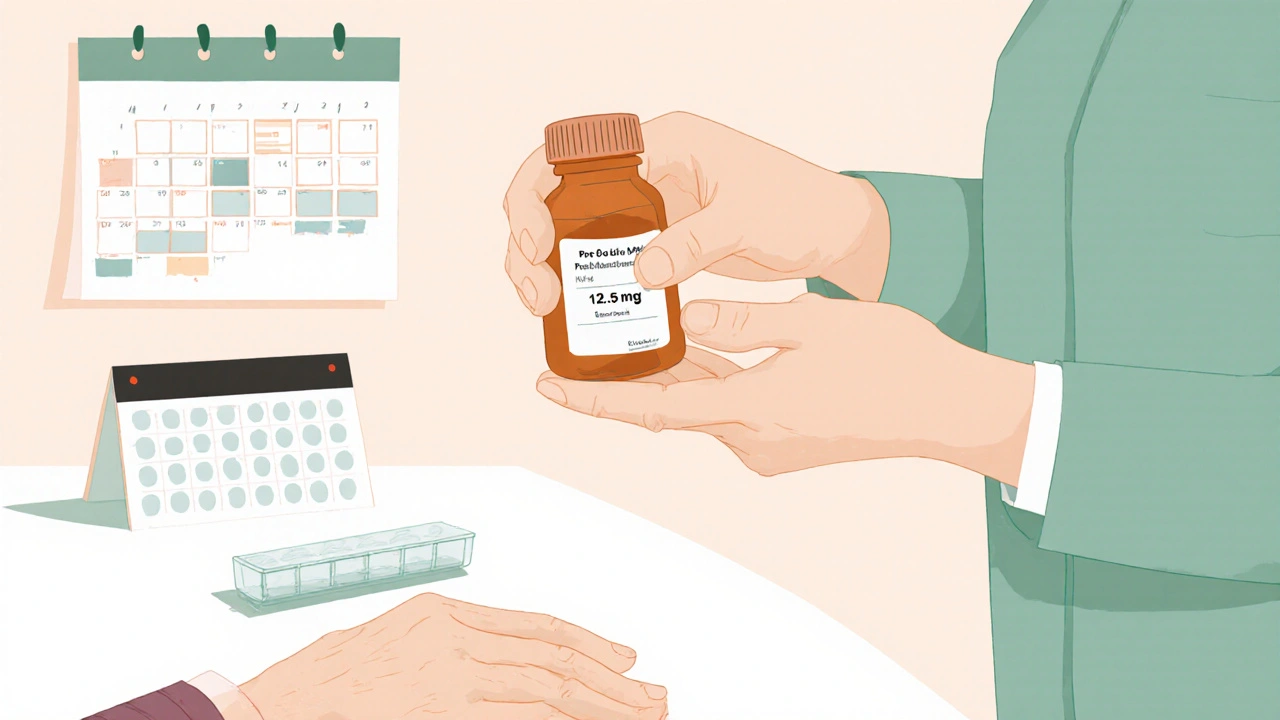
Who Should Be Doing This?
If you’re a caregiver, a family member, or a patient doing this at home, you’re not alone. But you shouldn’t be doing it alone.Healthcare workers need training. A 2023 ASHP study found it takes 3.2 hours of formal training to reach 95% proficiency in safe splitting and crushing. That includes knowing which drugs are safe, how to clean equipment, and how to document the process.
For home caregivers: ask your pharmacist for a quick demo. Most are happy to show you how to do it safely. Some even offer free training sessions. If you’re in a care home, ask if they have a dedicated splitter for each resident. If not, push for it. It’s not just about safety-it’s about compliance. The Joint Commission now lists improper pill splitting as a top 10 medication safety issue in inspections.
What’s Changing in 2025?
Regulations are catching up. As of January 1, 2025, OSHA’s updated Hazardous Drugs Standard requires all healthcare facilities to use closed-system crushing for any NIOSH-listed hazardous drug. That includes most chemotherapy, antiviral, and hormone treatments.The FDA is also requiring manufacturers to test and label whether a scored tablet can be safely split. By December 31, 2026, every scored pill must come with a clear “Split Safe” or “Do Not Split” label.
And new tech is coming. Smart splitters like Med-Engage’s 2024 FDA-cleared device can scan the pill, confirm it’s safe to split, and even record the dose in an app. Early trials show a 47.2% drop in errors. These won’t be in every home yet-but they’re coming.
Final Checklist: Split or Crush Safely
Before you split or crush any pill, run through this:- ✅ Check the label or ask your pharmacist: Is this pill safe to split or crush?
- ✅ Use only a dedicated pill splitter or closed-system crusher.
- ✅ Clean the equipment with 70% isopropyl alcohol after every use.
- ✅ Never share equipment between different medications or people.
- ✅ Split only what you need for the day-don’t pre-split and store.
- ✅ If in doubt, ask your pharmacist for a different strength or formulation.
This isn’t about being perfect. It’s about being careful. One wrong move can change a life. But with the right tools, knowledge, and habits, you can avoid contamination-and keep yourself or your loved one safe.
Can I split a pill with a knife or scissors?
No. Knives and scissors are not designed for splitting pills. They crush, tear, or crush unevenly, leading to inconsistent doses and dangerous residue buildup. Studies show using scissors results in 31.7% contamination rates and only 63.7% dose accuracy. Always use a dedicated pill splitter with a stainless steel blade.
Is it safe to crush pills for a feeding tube?
Only if the pill is specifically approved for crushing and you use a closed-system crusher. Many medications for feeding tubes are liquid or specially formulated. Crushing a time-release or enteric-coated pill can cause dangerous spikes in drug levels or prevent absorption. Always check with your pharmacist before crushing for tube feeding.
What should I do if I accidentally split a pill that shouldn’t be split?
Stop using the pill. Don’t take it. Call your pharmacist or doctor immediately. They’ll advise whether it’s safe to take a partial dose or if you need a replacement. If it was a hazardous drug, dispose of it properly and clean any surfaces it touched with alcohol. Never assume a split pill is still effective or safe.
Can I reuse a pill splitter for multiple people?
No. Even if you clean it, microscopic residue can remain. Each person should have their own dedicated splitter. In care homes, this is a standard safety protocol. Sharing equipment is a leading cause of cross-contamination incidents, especially with blood thinners or psychiatric medications.
Are there alternatives to splitting pills?
Yes. Many pharmacies now offer lower-strength tablets or liquid formulations. Insurance plans often cover them at the same cost as splitting. Ask your pharmacist: “Can you get me a 12.5 mg tablet instead of splitting a 25 mg one?” It’s safer, more accurate, and often just as affordable.


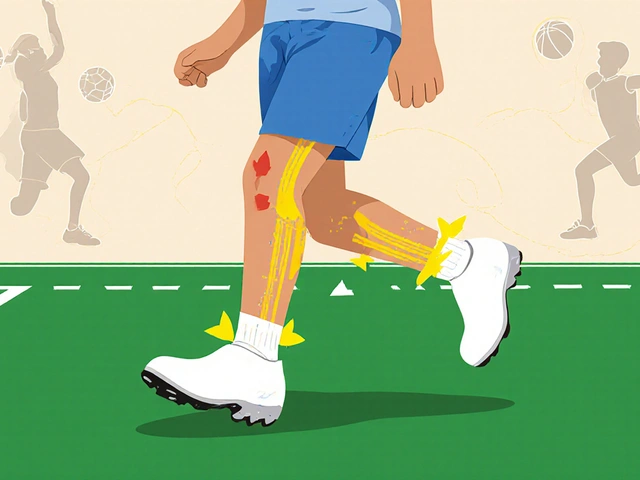
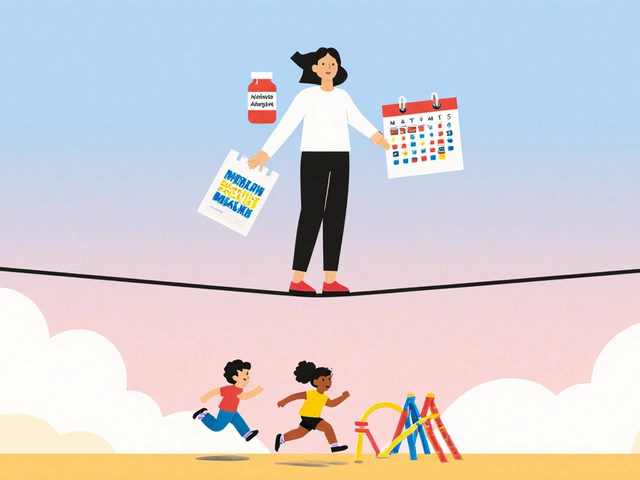

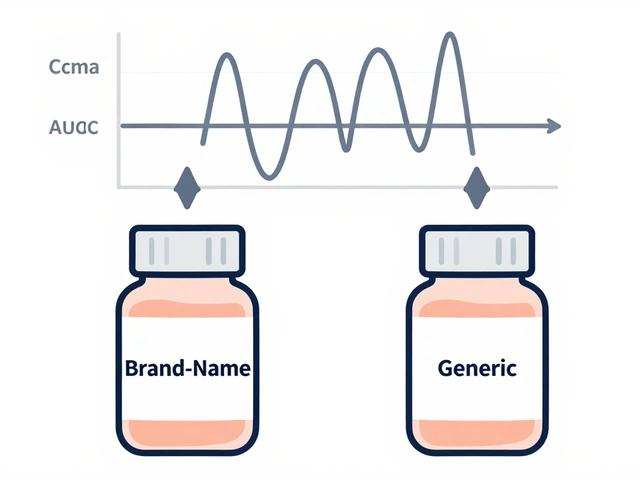
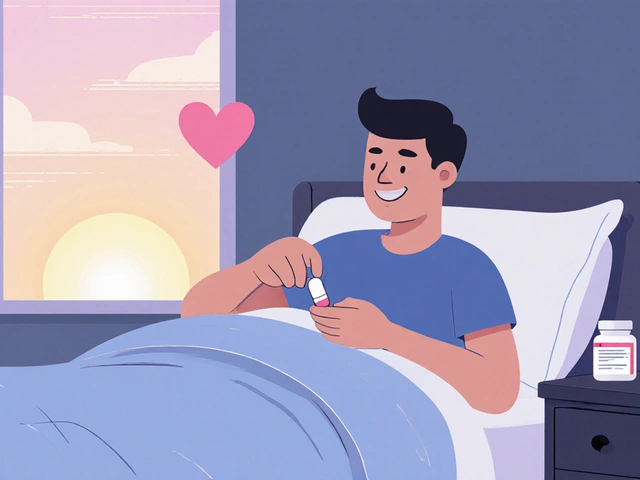
Ross Ruprecht
November 23, 2025 AT 14:10Y’all really need to stop splitting pills like they’re Oreo cookies. I saw my grandma crush her blood pressure med with a spoon and thought it was fine. Turns out she was basically giving herself a tiny chemo dose. Never again.
Bryson Carroll
November 24, 2025 AT 03:32So let me get this straight you’re telling me that people who can’t afford their meds are the problem not the pharmaceutical companies that charge $200 for a 30-day supply of a drug that costs 2 cents to make? Classic victim blaming wrapped in a lab coat
Jennifer Shannon
November 24, 2025 AT 18:34There’s something deeply human about trying to make medicine fit our lives, isn’t there? We split pills because we’re tired, because we’re scared, because we’re trying to stretch a dollar or a moment of peace. And yet the system doesn’t meet us there-it just gives us instructions and expects us to be perfect. I’ve seen my mother do this with her thyroid med for years, and she never knew half of what’s in this post. It’s not negligence, it’s neglect by design.
And now we’re being told to buy a $100 silent knight crusher like it’s a luxury? Meanwhile, Medicare won’t cover the 12.5 mg tablet version even though it’s literally the same pill, just pre-split. The irony is thick enough to spread on toast.
I’m not mad at the people who split pills. I’m mad at the system that makes them feel like they have no choice. Maybe if pharmacies offered more low-dose options without a 3-week wait, or if insurance didn’t penalize the pre-split versions… we wouldn’t need a 10-step safety protocol just to take a pill.
And yes, I know the science. I’ve read the NIOSH reports. I’ve seen the 4.7 ng/cm² numbers. But science doesn’t feed people. Compassion does. And right now, we’re treating medication safety like a technical problem, not a human one.
Still… thank you for writing this. Someone needs to say it out loud.
Suzan Wanjiru
November 25, 2025 AT 13:42My mom’s a home health nurse and she uses a Silent Knight for chemo meds and cleans it with alcohol wipes after every single use. She also has a color-coded system for each patient. No sharing. Ever. I used to think it was overkill until I saw the data. Now I won’t let anyone touch my dad’s meds without gloves and a dedicated splitter. It’s not paranoia-it’s protocol.
Also if your pill has a score line don’t assume it’s safe. My aunt split her extended-release gabapentin and ended up in the ER with a seizure. The score line was just for manufacturing. Always check with your pharmacist.
Henrik Stacke
November 26, 2025 AT 13:36As someone who has worked in UK NHS pharmacy for over two decades, I can confirm that the contamination risks outlined here are not only accurate but underappreciated. In fact, the 2023 Ohio incident was mirrored in a care home in Yorkshire, where a single pill splitter led to three patients experiencing unexplained bradycardia. All were on warfarin. All had shared equipment. One required emergency transfusion.
Here in the UK, we’ve adopted the closed-system crusher as standard in all care homes since 2022. It’s not expensive. It’s not complicated. It’s simply the right thing to do. The real tragedy is not the lack of tools-it’s the lack of training. Nurses and carers are expected to be pharmacists without any formal education on dosage integrity.
I applaud the FDA’s 2026 labeling mandate. But let’s not forget: the patient who splits a pill at home is not a rogue actor. They are a product of a fragmented system. We need to meet them where they are-with education, with affordable alternatives, and with dignity.
Manjistha Roy
November 27, 2025 AT 15:34My brother is a caregiver for his wife who has Parkinson’s and takes seven different pills daily. He splits three of them because the pharmacy doesn’t stock the exact dose. He uses a plastic splitter from the drugstore and wipes it with a tissue. I showed him this article. He cried. He bought a stainless steel splitter today. He’s also calling the pharmacy to ask about pre-split options. I’m proud of him. But why did it take a 12-page safety guide for him to realize he was risking her life? The system failed him. Not him.
Pharmacists: please offer this info proactively. Don’t wait for someone to Google it after they’ve already crushed a pill. A simple handout at pickup could save a life.
Jennifer Skolney
November 28, 2025 AT 17:29OMG I just realized I’ve been splitting my mom’s lisinopril with a knife for 2 years 😭 I’m so sorry mom. I just got a Med-Plus Pro today. Also ordered a Silent Knight for her chemo meds. Thank you for this. I’m printing it out and taping it to the fridge.
JD Mette
November 29, 2025 AT 18:22I’ve been a caregiver for my dad since his stroke. I never thought about contamination. I just wanted him to take his meds. I didn’t know about the 7-day potency loss either. I’ve been splitting his entire week’s supply. I’m going to change that tomorrow. Thanks for the reminder.
Olanrewaju Jeph
December 1, 2025 AT 08:14As a pharmacist in Lagos, I can attest that pill splitting is rampant in Nigeria due to cost and accessibility issues. However, the lack of awareness is even more dangerous. Many patients use razor blades, kitchen grinders, or even stones. We conduct monthly community outreach to teach safe splitting techniques and distribute low-cost dedicated splitters. The 2024 FDA labeling initiative will be a game-changer globally. We must ensure that these standards reach low-resource settings too.
Pharmaceutical companies must not only label but also subsidize safe alternatives. Safety should not be a privilege.
Laurie Sala
December 2, 2025 AT 23:08Okay but have you seen the price of a Silent Knight? $220?! And my insurance won’t cover it because it’s "not medically necessary"? So I’m supposed to risk my husband’s life because the system won’t pay for the tool that prevents death? This isn’t safety-it’s a luxury for the rich.
I’m not going to stop splitting pills. I’m going to keep wiping it with alcohol and praying. That’s my reality.
Matthew Mahar
December 3, 2025 AT 06:23Wait so if I crush a pill for my cat’s liquid med is that bad? I use a coffee grinder… I thought that was fine? 😅
Casper van Hoof
December 4, 2025 AT 20:06The fundamental issue here is not the method of pill manipulation, but the epistemological disjunction between pharmaceutical design and socioeconomic reality. The pill, as a technological artifact, assumes a context of abundance and regulatory fidelity-a context that is, for a significant portion of the global population, non-existent. To prescribe equipment as a solution without addressing cost, access, or systemic neglect is to engage in technocratic paternalism.
Richard Wöhrl
December 6, 2025 AT 15:30Important note: If you’re crushing pills for a feeding tube, always check if the drug is compatible with tube feeding. Some meds, like SSRIs or antifungals, can clog tubes even if crushed properly. And never mix crushed meds with food unless the pharmacist says it’s safe-some drugs interact with fat or acid in food and lose effectiveness.
Also, if you’re using a pill splitter, store it in a dry place. Moisture causes metal blades to corrode, which can leave tiny metal flakes in your pill. I’ve seen this happen. It’s gross and dangerous.
Pramod Kumar
December 8, 2025 AT 04:04I grew up in a village where medicine was a luxury. My grandmother used to crush pills with a stone and mix them in honey because my uncle couldn’t swallow. We didn’t know about contamination. We just wanted him to feel better. Today, I’m a nurse in Delhi, and I carry a tiny stainless steel splitter in my pocket. I teach families how to use it. I don’t judge. I just show them a better way. Because safety isn’t about rules-it’s about love with a little bit of science.